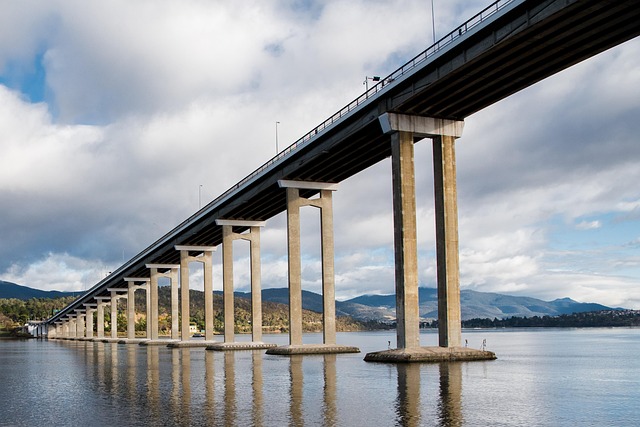Photorealistic structural renderings, powered by advanced 3D modeling software, are essential tools in modern construction. They provide detailed visualizations that enhance communication, identify design flaws early, and improve client satisfaction. By creating lifelike representations of structures, these renderings streamline projects, facilitate informed discussions, and boost stakeholder engagement.
In today’s construction industry, ensuring accuracy from design to completion is paramount. Photorealistic structural renderings offer a powerful tool for visualizing and communicating complex building designs. This article explores how detailed, reinforcement-focused renderings enhance project precision. We delve into the benefits of advanced visualizations, from improving communication among stakeholders to catching potential errors early in the process. By examining the step-by-step creation of these renderings, we highlight their indispensable role in achieving construction accuracy.
Photorealistic Renderings: Visualizing Structural Accuracy
In today’s digital age, photorealistic structural renderings have emerged as a powerful tool for ensuring construction accuracy. These highly detailed visualizations go beyond mere aesthetics, providing a clear and precise representation of a structure before it’s even built. By employing advanced 3D modeling software and rendering techniques, architects and engineers can create virtual models that mimic the final product with remarkable authenticity. This not only aids in identifying potential design flaws or errors early in the process but also facilitates effective communication between stakeholders, ensuring everyone is on the same page regarding the project’s structural integrity.
Moreover, photorealistic renderings offer a level of realism that helps clients and investors visualize the final result, enhancing their confidence in the project. With minute details rendered with accuracy, from material textures to shadow play, these visualizations serve as a reliable guide for both practical considerations and aesthetic appreciation. This blend of functionality and beauty underscores the significance of photorealistic structural renderings in modern construction practices.
Benefits of Detailed Construction Visualizations
Detailed construction visualizations, such as photorealistic structural renderings, offer a multitude of benefits that significantly enhance the building process. By providing precise and immersive visual representations, these tools enable stakeholders—from architects and engineers to contractors and clients—to gain a deeper understanding of the project’s design and potential outcomes. This level of clarity fosters better communication, reduces misinterpreting design intent, and minimizes errors during construction.
Moreover, photorealistic structural renderings serve as powerful decision-making aids. They allow for early identification of design flaws or inefficiencies, enabling proactive changes before construction begins. This cost-saving measure not only streamlines the building process but also ensures the final product aligns closely with the intended design vision, resulting in higher client satisfaction and project success.
Process: From Design to Accurate Renderings
The journey from design concept to final, accurate renderings is a meticulous process that hinges on reinforcement detailing. It begins with architects and designers crafting intricate 3D models using advanced software, incorporating every structural element, right down to minute components. These digital blueprints serve as the foundation for photorealistic structural renderings—highly detailed visual representations that mimic reality almost perfectly.
Next, specialized rendering artists employ sophisticated tools to bring these designs to life. They meticulously map textures, apply lighting effects, and pay close attention to architectural nuances. By integrating reinforcement details like brackets, trusses, and supporting structures into the renderings, the final visuals achieve an unparalleled level of accuracy, allowing stakeholders to vividly envision the construction’s end result before it’s even built.
Enhancing Communication with Advanced Structural Visuals
In today’s digital age, construction projects benefit immensely from advanced visual tools that improve communication and understanding among stakeholders. Photorealistic structural renderings play a pivotal role in this transformation. These highly detailed, lifelike images not only enhance the visual experience but also serve as precise representations of the proposed structures. Architects, engineers, and clients can now explore every nuance of a design before construction begins, facilitating informed discussions and minimizing miscommunications.
With photorealistic structural renderings, intricate details such as material textures, lighting effects, and shadow play are accurately captured, providing a comprehensive view of what the final project will look like. This level of realism allows for better client engagement, as they can clearly envision the outcome. Moreover, these renderings serve as valuable tools for presenting ideas to investors or regulatory bodies, demonstrating not just aesthetics but also structural integrity and compliance with building codes.
Photorealistic structural renderings play a pivotal role in enhancing construction accuracy and communication. By incorporating detailed visualizations into the design process, stakeholders gain a clearer understanding of the final product. This article has explored the benefits of advanced structural visuals, from improving precision to streamlining project collaborations. With accurate renderings as a guiding tool, the path to successful construction projects becomes more navigable, ensuring every element aligns with the initial vision.
